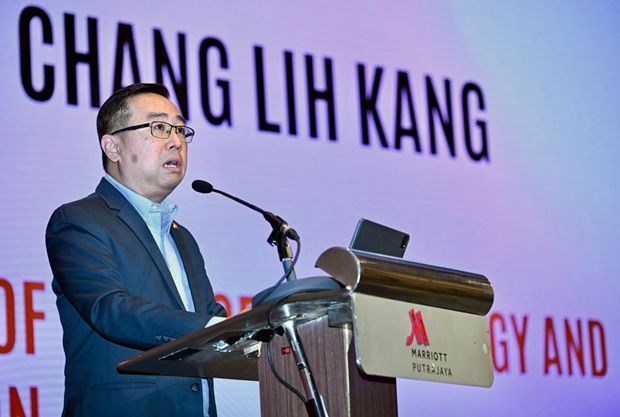PUTRAJAYA: Malaysia’s head start in rare earth elements processing technology ensures mineral sovereignty remains protected even under trade deals with superpowers, says Chang Lih Kang.
The Science, Technology and Innovation Minister said Malaysia must guard its RM809bil worth of REE deposits and build technological sovereignty.
He said this is critical as China currently dominates the REE processing industry.
Chang spoke to the media after officiating the XThree Exploration Thorium and Rare Earth Seminar, “Securing the Future: Science, Strategy and Sustainability in REE Industry,” on Monday (Nov 3).
The event was organised by the Malaysian Association of Research Scientists and attended by patron Tan Sri Ir Dr Ahmad Tajuddin Ali and hundreds of scientists.
“We have the advantage of talent and significant deposits of REE in Malaysia. We have a moratorium on raw material exports, we need to develop midstream and downstream products,” he said.
“We cannot have China controlling all REE resources as that creates vulnerabilities in the global supply chain. China now controls 70% of processing capacity.
We need to develop our own REE technology capacity so we do not rely on other countries,” added Chang.
He said the recently signed reciprocal trade agreement with the United States on REE does not impose restrictions on Malaysia.
“I do not see any restrictions, as the clause promotes openness and does not restrict any one country. Even if the US asks for more and we cannot produce more, we cannot help it,” he added.
“That clause is to promote openness so no restriction is imposed on any one country,” he said.
When asked about an exit clause if US demand is not met, Chang said the question should be answered by the International Trade and Industry Ministry.
Last week, Prime Minister Datuk Seri Anwar Ibrahim and US President Donald J Trump inked a deal stating Malaysia’s commitment on rare earth magnet sales to the US.
At the same media conference, Lynas CEO and managing director Amanda Lacaze said the company will undertake research with Malaysian academia under its licence.
She said Lynas will share outcomes of REE processing research.
“There are very few companies in the world that know how to process REE sustainably,” she said.
“Malaysia has had a head start in REE processing skills and competency over the past decade,” she added.
“Others may enter the race but will have to run to catch up with Malaysia’s expertise,” she said.
“Malaysia will be a centre of excellence in REE processing and develop its own resources,” she added.
This includes processing ion adsorption clay deposits.
(The IAC is sought for high value downstream products like supermagnets and batteries.)
Earlier, in his opening speech, Chang said the global REE market is estimated at USD3.9 to 13bil in 2024.
He said it is projected to more than double by 2030 to USD6 to 28bil in value.
“This growth is driven by electric vehicles, wind turbines and advanced electronics.
It underscores how essential these materials are for the clean energy transition,” he added.
“Malaysia is not starting from zero. Our nation possesses significant REE and thorium resources,” he added.
These are particularly within IOC deposits with low radioactivity and manageable environmental profiles.
“Preliminary studies under previous Malaysia Plans indicate an inferred REE resource of about 16.1 million metric tonnes,” he said.
He said the estimated in-situ value exceeds RM809bil.
Deposits have been identified in Perak, Kedah, Terengganu and Sarawak.
Each has distinct geological characteristics supporting light and heavy REE development.
“Our true advantage lies in our scientific capacity and strong institutional governance.
Malaysia already has comprehensive nuclear safety and radiation regulation under Act 304,” he added.
He said this aligns with International Atomic Energy Agency standards.
To coordinate policy and implementation, the Government has set up a Special Task Force on REE.
It brings together NRES, MOSTI, MITI, the Finance Ministry and state governments.
“This whole-of-government approach ensures transparency, responsibility and shared benefit,” he said.
He said it covers stages from exploration to processing and downstream applications.








